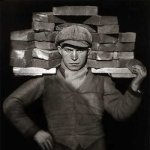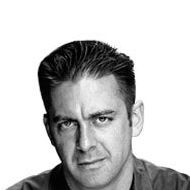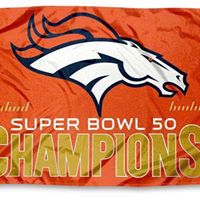Edward J Conlon
age ~86
from Carrboro, NC
- Also known as:
-
- Edward L Conlon
- Woody Conlon
- Ed Conlon
- Edwards Conlon
- Edward Conlan
- Phone and address:
-
1000 Smith Level Rd, Carrboro, NC 27510
9192405931
Edward Conlon Phones & Addresses
- 1000 Smith Level Rd, Carrboro, NC 27510 • 9192405931
- 1000 Smith Level Rd APT H8, Carrboro, NC 27510 • 9192405931
- 6801 Sandwell Ln APT 308, Raleigh, NC 27607 • 9199007640
- 33 Darien, New Hope, PA 18938 • 2156931139
- 396 Mount Lucas Rd, Princeton, NJ 08540 • 6096835190
- Hightstown, NJ
Resumes

Architect At Tise-Kiester Architects
view sourceLocation:
Raleigh-Durham, North Carolina Area
Industry:
Architecture & Planning

Edward Conlon
view sourceSkills:
Microsoft Excel

Edward Conlon
view source
Edward Conlon
view source
At Transystems
view sourceLocation:
United States
Wikipedia References

Edward Conlon
Wikipedia

Edward Cl
view sourceEdward Conlon. From Wikipedia, the free encyclopedia. Jump to: navigation, search. Edward W. Conlon (born 1965) is an author and former New York Police ...
Us Patents
-
Method Of Making Transmission Lines And Buried Passive Components In Green Tape
view source -
US Patent:20010001406, May 24, 2001
-
Filed:Oct 30, 1998
-
Appl. No.:09/183479
-
Inventors:MICHAEL JAMES LIBERATORE - LAWRENCEVILLE NJ, US
BARRY JAY THALER - LAWRENCEVILLE NJ, US
PAUL F. PELKA - STANHOPE NJ, US
EDWARD J. CONLON - PRINCETON NJ, US
JON SHELDON PROKOP - DALLAS TX, US -
International Classification:C03B029/00
C04B033/34
C04B037/00
B05D005/12 -
US Classification:156/089120, 156/089210, 427/096000
-
Abstract:A method of making transmission lines and buried passive components in a green tape comprising embossing a channel or opening into the green tape of the desired size under heat and pressure, screen printing an ink of a conductive material or a passive component material to fill said embossed channel or opening; and firing said green tape. The embossing tool forms channels and openings having improved dimensional control over that obtained using screen printing. Further, embossing provides improved thickness control of lines and passive components as well.
-
Manufacture Of Printed Circuit Boards
view source -
US Patent:50359398, Jul 30, 1991
-
Filed:Feb 9, 1990
-
Appl. No.:7/477393
-
Inventors:Edward J. Conlon - Princeton NJ
Ashok N. Prabhu - East Windsor NJ
Simon M. Boardman - Holland PA
Valerie A. Pendrick - Lambertville NJ -
Assignee:David Sarnoff Research Center, Inc. - Princeton NJ
-
International Classification:B32B 300
-
US Classification:428137
-
Abstract:In the manufacture of printed circuit boards, a first photoresist post is patterned on the substrate where via holes are to be made. A dielectric layer is put down, a second photoresist layer patterned so as to have openings over and in alignment with the photoresist posts, and the dielectric removed from the via holes. Barrier layers to reduce interaction between layers of copper, dielectric and photoresist during filling of the via holes with a conductor via fill ink are also described.
-
Electrical Feedthroughs For Ceramic Circuit Board Support Substrates
view source -
US Patent:55652620, Oct 15, 1996
-
Filed:Jan 27, 1995
-
Appl. No.:8/379264
-
Inventors:Thomas P. Azzaro - Burlington NJ
Barry J. Thaler - Lawrenceville NJ
Edward J. Conlon - Princeton NJ
Ananda H. Kumar - Plainsboro NJ -
Assignee:David Sarnoff Research Center, Inc. - Princeton NJ
-
International Classification:B32B 900
-
US Classification:428210
-
Abstract:Electrical feedthroughs in printed circuit board support substrates for use in making double sided ceramic multilayer printed circuit boards are made by insulating the feedthrough openings with a first layer of nickel oxide and one or more layers of glass, and then filling the remainder of the feedthroughs with a conductive metal via fill ink. After firing, the resultant structure provides insulated electrical feedthroughs through the support substrate.
-
Thick-Film Copper Conductor Inks
view source -
US Patent:48745502, Oct 17, 1989
-
Filed:Dec 2, 1988
-
Appl. No.:7/278987
-
Inventors:Ashok N. Prabhu - East Windsor NJ
Kenneth W. Hang - Princeton NJ
Edward J. Conlon - Princeton NJ -
Assignee:General Electric Company - Schenectady NY
-
International Classification:H01B 106
-
US Classification:252512
-
Abstract:Improved copper conductor inks useful in fabricating multilevel circuits are provided. The inks comprise copper powder, a devitrifying glass frit which does not begin to flow until the furnace temperature is above about 700. degree. C. , and a suitable organic vehicle. Devitrifying glass frits with these properties include a zinc-calcium-aluminum-silicate glass frit, a zinc-magnesium-barium-aluminum-silicate glass frit, a zinc-magnesium-barium-aluminum-zirconium-phosphosilicate glass frit and mixtures thereof. The inks are advantageous in that they form copper conductor layers having excellent properties without the inclusion of traditional flux materials such as bismuth oxide.
-
Low Temperature Co-Fired Multilayer Ceramic Circuit Boards With Silver Conductors
view source -
US Patent:52162079, Jun 1, 1993
-
Filed:Feb 27, 1991
-
Appl. No.:7/661264
-
Inventors:Ashok N. Prabhu - East Windsor NJ
Edward J. Conlon - Princeton NJ
Barry J. Thaler - Lawrenceville NJ -
Assignee:David Sarnoff Research Center, Inc. - Princeton NJ
-
International Classification:H05K 100
-
US Classification:174256
-
Abstract:A novel ceramic green tape composition useful in the manufacture of silver conductor based, low temperature, co-fired multilayer circuit boards comprises from about 8-35% by weight of a calcium-zinc-aluminum-borosilicate devitrifying glass; from about 10-35% by weight of a low alkali borosilicate glass; from about 10-35% by weight of a lead-zinc-aluminosilicate glass; from about 10-35% by weight of a ceramic filler; up to 0. 5% by weight of a coloring agent and from about 20-45% by weight of an organic binder. The co-fired multilayer circuit boards made from these green tape compositions have excellent mechanical and electrical properties and have thermal expansion characteristics matching that of silicon. The devitrifying glass comprises from about 10-30% by weight of zinc oxide; from about 10-20% by weight of calcium oxide; up to about 15% by weight of boron oxide; from about 15-20% by weight of aluminum oxide and about 25-55% by weight of silicon oxide. The lead-zinc-aluminosilicate vitreous glass comprises from about 30-40% by weight of lead oxide, from about 6-12% by weight of zinc oxide, from about 6-10% by weight of aluminum oxide and from about 40-55% by weight of silicon oxide.
-
Electrical Feedthroughs For Ceramic Circuit Board Support Substrates
view source -
US Patent:56814445, Oct 28, 1997
-
Filed:Jul 3, 1996
-
Appl. No.:8/670203
-
Inventors:Thomas Peter Azzaro - Burlington NJ
Barry Jay Thaler - Lawrenceville NJ
Edward James Conlon - Princeton NJ
Ananda Hosakere Kumar - Plainsboro NJ -
Assignee:David Sarnoff Research Center, Inc. - Princeton NJ
-
International Classification:C25D 502
C25D 556
C25D 550
C25D 512 -
US Classification:205125
-
Abstract:Electrical feedthroughs in printed circuit board support substrates for use in making double sided ceramic multilayer printed circuit boards are made by insulating the feedthrough openings with a first layer of nickel oxide and one or more layers of glass, and then filling the remainder of the feedthroughs with a conductive metal via fill ink. After firing, the resultant structure provides insulated electrical feedthroughs through the support substrate.
-
Wire Placement Fixture
view source -
US Patent:39724638, Aug 3, 1976
-
Filed:Feb 7, 1975
-
Appl. No.:5/548009
-
Inventors:Edward James Conlon - Trenton NJ
Ralph DeStephanis - Middlesex NJ
Thomas Tipton Hitch - Trenton NJ -
Assignee:RCA Corporation - New York NY
-
International Classification:B23K 1900
-
US Classification:228 441A
-
Abstract:A microcircuit adhesion testing method and fixture for uniform placement and soldering of a preselected length of wire above a film pad on a microcircuit substrate with consistent substrate-to-wire spacing, comprising a holder for the substrate, finger spacers attached to the holder, and a member for pressing the wire against the spacers. The spacers are made of a material which is not wettable with solder of the type used to attach the wire to the film.
Flickr
Youtube

Edward Conlon
view source
Edward Conlon
view source
Edward Conlon
view sourceGoogleplus

Edward Conlon
Get Report for Edward J Conlon from Carrboro, NC, age ~86











